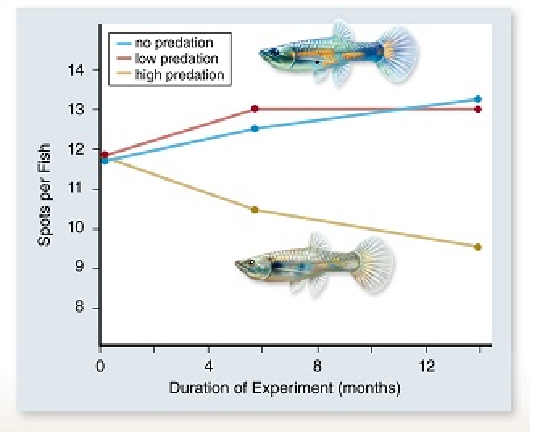In the experiment above, guppy color patterns (spots) were measured in populations exposed to increasing amounts of predation. From this you could conclude that ____ .

A. evolutionary changes take millions of years to appear
B. predators are less likely to catch and eat brightly colored guppies
C. predators are more likely to catch and eat brightly colored guppies
D. brightly colored guppies are more likely to reproduce in the presence of predators
E. predators do not affect the color patterns of guppies
C. predators are more likely to catch and eat brightly colored guppies
You might also like to view...
Photosystem I is responsible for splitting a water molecule in the first step of oxygenic electron flow
Indicate whether the statement is true or false.
All EXCEPT which of the following hormones
are in some way responsible for the production of sperm? a. luteinizing hormone b. follicle-stimulating hormone c. gonadotropin-releasing hormone d. testosterone e. human chorionic gonadotropin
If a tRNA anticodon reads GAI, to which mRNA codon(s) will it bind? What amino acid will the tRNA carry?
What will be an ideal response?
What type of statistical analysis is used to compare observed and expected results in order to evaluate the validity of an estimate based on the Hardy-Weinberg equilibrium?
What will be an ideal response?